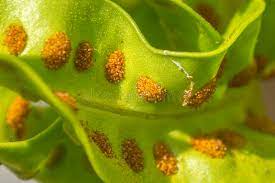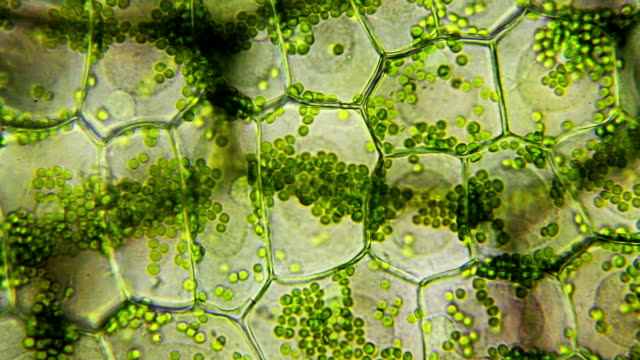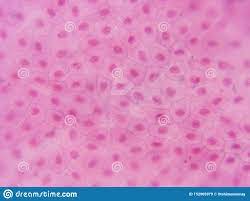Ctrl + F is the shortcut in your browser or operating system that allows you to find words or questions quickly.
Ctrl + Tab to move to the next tab to the right and Ctrl + Shift + Tab to move to the next tab to the left.
On a phone or tablet, tap the menu icon in the upper-right corner of the window; Select "Find in Page" to search a question.
Share UsSharing is Caring
It's the biggest motivation to help us to make the site better by sharing this to your friends or classmates.
Cell Theory
Cell Theory is a fundamental concept in biology that states that all living organisms are made up of cells, which is the basis of modern life sciences.
cells
microscopy
organisms
basic
structural
functional
units
living
all
fundamental
biology
development
reproduction
pre-existing
cell division
90. Which statement is part of the modern cell theory?
- All cells are prokaryotic.
- All cells come from pre-existing cells.
- Cells do not contain genetic material.
- All cells are multicellular.
This scientist was the first to identify cells and name them:
- Hooke
- Leeuwenhoek
- Schleiden
- Virchow
Robert Hooke named the small compartments that made up the cork __________after the rooms monks lived in.
- organelles
- membranes
- mocroscopes
- cells
Organisms made up of more than 1 type of cell are called _________________ organisms
- Multicellular
What type of organism consists of many cells?
- Unicellular Organism
- MulticellularOrganism
- Virus
- Cell Theory
13. What is the main function of the cell membrane?
- Regulate the passage of substances in and out of the cell.
- Store genetic information.
- Produce ATP.
- Synthesize proteins.
Produce offspring that are similar to the parents

- reproduce
The basic unit of life
- cell
81. Which organelle is responsible for producing ATP, the cell's energy currency?
- Golgi apparatus
- Mitochondria
- Endoplasmic reticulum
- Lysosome
37. Which scientist is credited with discovering and naming cells?
- Robert Hooke
- Matthias Schleiden
- Anton van Leeuwenhoek
- Louis Pasteur
Robert Hooke was the scientist responsible for naming _____________
- cells
Homeostasis in a cell is a way for the cell to stay ...
- Balanced
- Alive
- Growing
- Dividing
He studied animals. He looked at animal tissues under the microscope and saw cells. He came to the conclusion, "All animals are made of cells".

- Theodor Schwann
the process of increasing in physical size.

- Growth
18. Which organelle is responsible for detoxifying harmful substances in the cell?
- Golgi apparatus
- Peroxisome
- Lysosome
- Mitochondria
Which of the following statements is true?
- Plants and animal cells have cell walls for protection.
- Animal cells have one large vacuole; the plant cell has tiny ones.
- Plant cells contain chlorophyll; animal cells have lysosomes.
- Animal cells are box shaped; plant cells are circular.
69. Which scientist first observed and described cells in cork?
- Robert Hooke
- Gregor Mendel
- Anton van Leeuwenhoek
- Louis Pasteur
True or False: Every living thing is made of one or more cells?
- True
- False
True or False: All cells come from pre-existing cells
- True
- False
45. What is the primary function of the Golgi apparatus in a cell?
- Synthesize lipids
- Modify, package, and transport proteins and lipids.
- Break down cellular waste.
- Produce ATP.
Who’s work did Rudolf Virchow “borrow without permission” that led to another scientist feud?
- Image: https://quizizz.com/media/resource/gs/quizizz-media/quizzes/063a467a-28cb-4101-a61f-e856a7b57f3c?w=90&h=90
- Image: https://quizizz.com/media/resource/gs/quizizz-media/quizzes/0b0e51a7-3e9f-4d00-a630-f45b8825be17?w=90&h=90
- Image: https://quizizz.com/media/resource/gs/quizizz-media/quizzes/e4f578b4-c76a-41cd-a7e3-e6f66c6ffd91?w=90&h=90
- Image: https://quizizz.com/media/resource/gs/quizizz-media/quizzes/8e93956c-53bd-4226-a369-e78b51ef77c4?w=90&h=90
A person pulling fingers back from a hot stove is an example of which of the functions of life?
- Homeostasis
- Response
- Reproduction
- All of the above
- None of the above
The large membrane-enclosed structure that contains genetic information in the form of DNA and controls many of the cell's acitivities
- nucleus
eukaryotic cells...
- have a nucleus
- don´t have a nucleus
Prokaryotes DO NOT HAVE...
- DNA
- flagella
- a membrane bound nucleus
- ribosomes
Which of the following is considered a function of life?
- Metabolism
- Growth
- Reproduction
- All of the above
- None of the above
All cells -----
- are produced by dead cells
- come from other living cells
- crystallize out of air
True or False?Cell is the basic unit of life...
- True
- False
Check all that are true about multicellular organisms.
- They are composed of more than one cell. (Missed)
- They are composed of more than one cell. (Missed)
- They are composed on only one cell.
- They usually have cells that are organized into tissue, organs, and organ systems. (Missed)
- Cells in multicellular organisms all perform the same function.
- Cells in multicellular organisms may perform very different functions. (Missed)
30. What is the function of the cell wall in plant cells?
- Provide structural support and protection.
- Regulate the passage of substances in and out of the cell.
- Synthesize proteins.
- Store genetic information.
14. Which scientist first observed and described animalcules (microorganisms) using microscopes?
- Robert Brown
- Anton van Leeuwenhoek
- Matthias Schleiden
- Louis Pasteur
An embryo developing a heart valve is an example of which of the functions of life?
- Homeostasis
- Growth
- Response
- All of the above
- None of the above
Which of the following would be a reasonable size for a molecule?
- 100 nm
- 10 nm
- 1 nm
- All of the above
- None of the above
29. Which organelle is responsible for producing and storing cellular energy in the form of ATP?
- Golgi apparatus
- Mitochondria
- Endoplasmic reticulum
- Lysosome
what is protozoa? who was the first person to observe bacteria and protozoa.
- single celled animal, Anton van Leeuwenhoek
To whom was Leeuwenhoek sending mail to in England?
- Image: https://quizizz.com/media/resource/gs/quizizz-media/quizzes/38be2a1f-6198-4f8b-b495-a7b20068354b?w=90&h=90
- Image: https://quizizz.com/media/resource/gs/quizizz-media/quizzes/ac1ef135-540f-460b-9f48-b67cae9dd00f?w=90&h=90
- Image: https://quizizz.com/media/resource/gs/quizizz-media/quizzes/aff5e985-0df8-490b-8546-24fc4b1fec23?w=90&h=90
- Image: https://quizizz.com/media/resource/gs/quizizz-media/quizzes/ad19476d-a8a6-4d54-b32a-5d48796e1090?w=90&h=90
The German scientist, ________ concluded all animals are made up of cells.
- Matthais Schleidon
- Theodore Schwann
- Rudolf Virchow
- Anton Van Leeuwenhoek
- Robert Hooke
Robert Hooke, Anton van Leeuwenhoek, Theodor Schwann, Rudolf Virchow, and Matthias Schliden were all responsible for what theory?
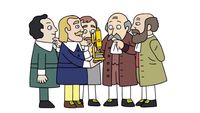
- The Theory of Gravity
- The Theory of Relativity
- The Cell Theory
- The Theory of Continental Drift
47. Which organelle is responsible for the production of ribosomal RNA (rRNA)?
- Nucleolus
- Lysosome
- Golgi apparatus
- Mitochondria
Magnifies small objects

- hand lens
Where is DNA stored inside of a Prokaryotic cell?
- Cytoplasm
There are three types of bacteria - Coccus, Bacilli, & Spirilla. Which of the following picture shows the spirilla.
- Image: https://quizizz.com/media/resource/gs/quizizz-media/quizzes/f9a10b86-159e-4876-90f3-4cd10aa5abdb?w=90&h=90
- Image: https://quizizz.com/media/resource/gs/quizizz-media/quizzes/4d4f1663-2865-43b7-84af-d45365a12845?w=90&h=90
- Image: https://quizizz.com/media/resource/gs/quizizz-media/quizzes/4b678b3f-8606-49b7-ab80-10c9fe719cdd?w=90&h=90
67. What is the main function of the cell membrane?
- Regulate the passage of substances in and out of the cell.
- Selectively permeable barrier that separates the cell from its environment.
- Produce ATP.
- Synthesize proteins.
Which of the following is larger than a virus?
- Membrane
- Lysosome
- ATP
- All of the above
- None of the above
idea that all living things are composed of cells, and new cells are produced from existing cells

- cell theory
89. Which scientist proposed that "all plants are made of cells"?
- Louis Pasteur
- Matthias Schleiden
- Robert Hooke
- Anton van Leeuwenhoek
31. Which scientist is known for his studies on the movement of fluids in plants, contributing indirectly to cell theory?
- Anton van Leeuwenhoek
- Jan Ingenhousz
- Matthias Schleiden
- Robert Brown
When looking at a specimen on your slide, you should always start with the
- low objective lens (x4)
- medium objective lens
- high objective lens
- super extra high power lens
28. Which type of cell has a cell wall, chloroplasts, and a large central vacuole?
- Plant cell
- Animal cell
- Prokaryotic cell
- Fungal cell
Made of a single cell

- Unicellular
A rigid structure that surrounds the cell membrane and provides support to the plant cell

- cell wall
Which of the following is added to a micrograph or a drawing to help show the actual size of the structures pictured?
- Ruler
- Magnification power
- Scale bar
- All of the above
- None of the above
Which scientist concluded that all cells come from other cells?
- Schleidon
- Hooke
- Leeuwenhoek
- Virchow
Which process turns food into ATP?
- Photosynthesis
- Cellular Respiration
- Protein Synthesis
- Eating
What does the Nucleolus make?
- Chromatin
- DNA
- Ribsomes
- Nuclear Waste
82. Which scientist first observed and described animalcules (microorganisms) using microscopes?
- Robert Brown
- Anton van Leeuwenhoek
- Matthias Schleiden
- Louis Pasteur
Cells that do not enclose their DNA in nuclei; bacteria
- prokaryotes
____ is credited with being the first scientist to observe cork cells.
- Leewenhoek
- Shleidon
- Hooke
Because a unicellular organisms only exist on a small scale, they..
- Can only live for 24 hours.
- Are usually eaten by larger organisms.
- Can survive with most cells.
- Can only be seen with a microscope.
94. Which organelle is responsible for producing ATP, the cell's energy currency?
- Golgi apparatus
- Mitochondria
- Endoplasmic reticulum
- Lysosome
Material which is eliminated or discarded as no longer useful or required.
- waste
99. Who discovered the presence of the nucleus in plant cells?
- Schwann
- Robert Brown
- Hooke
- Pasteur
Life only comes from life means ____________
- Biogenesis
A ______ cell keeps conditions inside the organism within tolerable limits.
- homeostasis
What is one way in which all living things on Earth are alike?
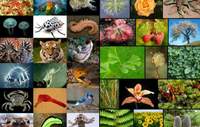
- All living things have hair.
- All living things are made of cells and come from other cells.
- The cells of all living things have chloroplast.
- All living things can move.
Which of the following would be a reasonable size for a membrane?
- 10 um
- 10 nm
- 10 pm
- All of the above
- None of the above
92. What is the primary function of the cell membrane?
- Regulate the passage of substances in and out of the cell.
- Store genetic information.
- Produce ATP.
- Synthesize proteins.
25. What is the primary function of the nucleolus within the nucleus of a cell?
- Ribosome production
- DNA replication
- Lipid synthesis
- Energy production
The process plants use to make food.
- Cellular Respiration
- Photosynthesis
- Function
- Nucleus
72. Which part of the cell theory states that all metabolic reactions occur within cells?
- Cells are the sites of all metabolic reactions.
- Cells are the basic units of structure and function in living organisms.
- All living things are composed of cells.
- Cells can only arise from pre-existing cells.
If something has its growth limited, is it still considered alive?
- Yes
- No
- Only while it is growing
- It depends on the circumstances
- None of the above
From where did Leeuwenhoek discover bacteria?
- The gunk between his toes.
- The gunk in a dog's teeth.
- The gunk in his ear.
- The gunk in his teeth.
in the year ____ Rudolph Virchow proposed the 3rd part of the cell theory.
- 1855
38. What is the primary function of the cytoskeleton in a cell?
- Provide structural support and facilitate cell movement.
- Synthesize proteins.
- Store genetic information.
- Produce ATP.
What is the scientific theory that states that all living things are made of cells, the cell is the basic unit of life and that all cells come from other cells?
- Multicellular
- Unicellular
- Cell Theory
- Virus
What is a claim?
- A statement that is short.
- A statement that answers your question.
- A statement that has no meaning.
- A statement that is wrong.
What piece is a larger knob usually found on either the body tube or the arm and it is used to focus the image under low power?
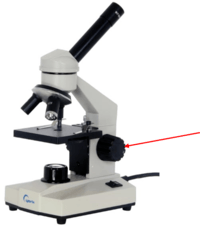
- Aperture
- Fine Adjustment Knob
- Diaphragm
- Coarse Adjustment Knob
55. Which type of microscope uses a focused beam of electrons to visualize the surface of specimens?
- Scanning electron microscope
- Light microscope
- Phase-contrast microscope
- Transmission electron microscope
Cell theory states that...
- cells are the basic building block of life
- cells are cool
- cells are microscopic
- cells cannot be destroyed
27. Which scientist is known for his contributions to the understanding of the inheritance of traits, although not directly related to cell theory?
- Matthias Schleiden
- Anton van Leeuwenhoek
- Robert Brown
- Gregor Mendel
What does a Prokaryotic cell lack?
- Cell Membrane
- Ribsomes
- Nucleus
- DNA
Which of the following is a statement which comprises part of the modern cell theory?
- All organisms are composed of one or more cells
- Cells are the smallest units of life
- All cells come from pre-existing cells
- All of the above
- None of the above
Where do cells come from?
- Dead cells
- Soil
- Other existing cells
- Free cell formation
what are the 2 main types of cells?
- prokaryotic
- prokaryotic
- eukaryotic
Eukaryote
- has organelles
- has organelles
- has a nucleus
- single celled
- multicellular
"All animals are made of cells". This fact was discovered by...
- Matthias Schleiden
- Robert Hooke
- Theodor Schwann
- Rudolf Virchow
Which of the following would be a reasonable size for an organelle?
- 10 mm
- 10 um
- 10 nm
- All of the above
- None of the above
53. Which organelle is responsible for the digestion of cellular waste and foreign particles in the cell?
- Mitochondria
- Lysosome
- Golgi apparatus
- Smooth endoplasmic reticulum
17. What is the function of the endoplasmic reticulum in a cell?
- Synthesize and transport proteins and lipids.
- Store genetic material.
- Break down cellular waste.
- Produce ATP.
Which instrument is credited for helping scientists develop cell theory?
- Image: https://quizizz.com/media/resource/gs/quizizz-media/quizzes/15eb6527-5ca1-4825-ad63-0542893698f4?w=90&h=90
- Image: https://quizizz.com/media/resource/gs/quizizz-media/quizzes/1badac49-f04a-487f-b88a-edc2e27aac3f?w=90&h=90
- Image: https://quizizz.com/media/resource/gs/quizizz-media/quizzes/1f556449-bfab-48e4-b5bb-448292c2b601?w=90&h=90
- Image: https://quizizz.com/media/resource/gs/quizizz-media/quizzes/ede59e01-0ed3-4905-8124-f1173ebae16b?w=90&h=90
41. What is the function of the nucleoplasm within the nucleus of a cell?
- Ribosome production
- Surround and protect the genetic material.
- Lipid synthesis
- Energy production
I was a physician who studied cancer cells. I discovered that cells come from other cells.
- Anton Van Leewenhoek
- Matthias Schleiden
- Rudolph Virchow
- Theodor Schwann
5. What is the correct sequence of the development of the cell theory by scientists?
- Schleiden, Schwann, Virchow
- Hooke, Schleiden, Schwann
- Leeuwenhoek, Mendel, Hooke
- Pasteur, Virchow, Leeuwenhoek
70. Which of the following is NOT one of the principles of the cell theory?
- All living things are composed of cells.
- Cells are the basic units of life.
- Cells can only arise from pre-existing cells.
- Cells carry out the functions of living organisms.
This scientist concluded that plants are made of cells:
- Virchow
- Schleiden
- Schwann
- Leeuwenhoek
An organelle found in plant and algae cells where photosynthesis occurs

- Chloroplast
Which of the functions of life involves providing a source of compounds which provide an organism with energy and chemical compounds to maintain life?
- Metabolism
- Nutrition
- Homeostasis
- All of the above
- None of the above
Who observed the first living cells and referred to them as "animalcules" (little animals)?
- Mathias Schlieden
- Robert Hooke
- Theodore Schwann
- All of the above
- None of the above
What is the name of the structure labeled #10?
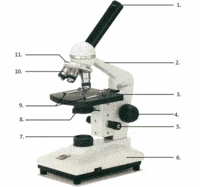
- objective lens
- ocular lens
- aperture
- nosepeice
What happens when the cell of a unicellular organism dies?
- A new cell will grow and sustain the organism.
- The organism’s cell divides, but the cell is much smaller.
- The whole organism dies.
- The organism becomes a multicellular organism.
60. Who is credited with the discovery of the first cell?
- Robert Hooke
- Anton van Leeuwenhoek
- Matthias Schleiden
- Louis Pasteur
Which of the following would be a reasonable size for a bacterium?
- 10 um
- 1 um
- 100 nm
- All of the above
- None of the above
A baby learning to walk is an example of which of the functions of life?
- Growth
- Response
- Homeostasis
- All of the above
- None of the above
56. What is the primary function of the central vacuole in plant cells?
- Synthesize proteins
- Store water, nutrients, and waste products.
- Provide structural support
- Produce ATP
What year did Robert Hooke name the ¨cell¨?
- 1665
- 1838
- 1639
- 1910
What type of organism consists of only one cell?
- Unicellular Organism
- MulticellularOrganism
- Virus
- Cell Theory
This scientist proposed that all cells come from other cells:
- Leeuwenhoek
- Schleiden
- Schwann
- Virchow
All organisms are made of:
- organelles
- cytoplasm
- DNA
- cells
Some organisms are composed of many cells.
- True
- False
1. Who is credited with formulating the cell theory?
- Robert Hooke
- Matthias Schleiden
- Theodor Schwann
- Anton van Leeuwenhoek
All cells come from___________ cells.
- pregnant
- pre-existing
- paternal
- pin size
What did Anton Van Leeuwenhoek do instead of buying a microscope?
- He stole one.
- He borrowed one from a friend.
- He built his own.
- He used a telescope.
6. Which part of the cell theory states that all metabolic reactions occur within cells?
- Cells are the sites of all metabolic reactions.
- Cells are the basic units of structure and function in living organisms.
- All living things are composed of cells.
- Cells can only arise from pre-existing cells.
Which of the following is larger than a codon?
- Nucleotide
- Ribosome
- ATP
- All of the above
- None of the above
Who looked at cork and named the cell?
- Robert Hooke
What gives the cell it's framework?
- Cell Membrane
- Plasma Membrane
- Cell Wall
- Cytoskeleton
When cells are damaged, new cells are created by cell division. How does the cell theory support this fact?

- It states that all cells have a nucleus which divides.
- It states that all living things are made up of one or more cells.
- It states that cells come from previously existing cells.
- It states that the basic units of structure and function are cells.
The first part of The Cell Theory based on the work of Matthias Schleiden and Theodor Schwann.
- All living things are made of cells.
Storage area for water and other substances in a cell.
- Vacuole
Which statement is a part of the cell theory?
- all cells come from preexisting cells
- bacteria are prokaryotic cells
- eukaryotic cells are complex
- humans are multicellular
3. Which scientist first observed and described cells in cork?
- Robert Hooke
- Gregor Mendel
- Anton van Leeuwenhoek
- Louis Pasteur
What does the Cell Theory state?
- That all living things are made of cells
- Every cell has only one nucleus
- That plants cannot have cells
- Animals are only one that have cells
Some organisms are composed of only one cell.
- True
- False
66. Who is credited with improving and popularizing the microscope, leading to significant advancements in cell theory?
- Anton van Leeuwenhoek
- Louis Pasteur
- Matthias Schleiden
- Robert Hooke
What did M. Schleiden find out?
- All animal cells are made of cells
- All animals have voting rights
- All animal cell have different functions
- All plants are made cells
A plant cell is
- Eukaryotic
- Prokaryotic
What are the 3 parts to the cell theory?
- All organisms are composed of one or more cells.
- All organisms are composed of one or more cells.
- The cell is the basic unit of structure.
- All cells come from preexisting cells.
74. Which type of microscope is used to observe living cells in real-time?
- Phase-contrast microscope
- Electron microscope
- Light microscope
- Scanning tunneling microscope
Powerhouse of the cell, organelle that is the site of ATP (energy) production

- Mitochondria
Why was microscope essential for the development of the cell theory?
- [No Answer]
what is the 3rd part of the cell theory?
- all living organisms must have cells
- cells are the basic unit of life
- all cells must come from other cells
The second part of Cell Theory states: "All living organisms are made up of cells."
- True
- False
- I don't know
- If you say so
______________ are the basic unit of life.
- DNA
- RNA
- Cells
- Takis
The ____ Is the basic unit of life.
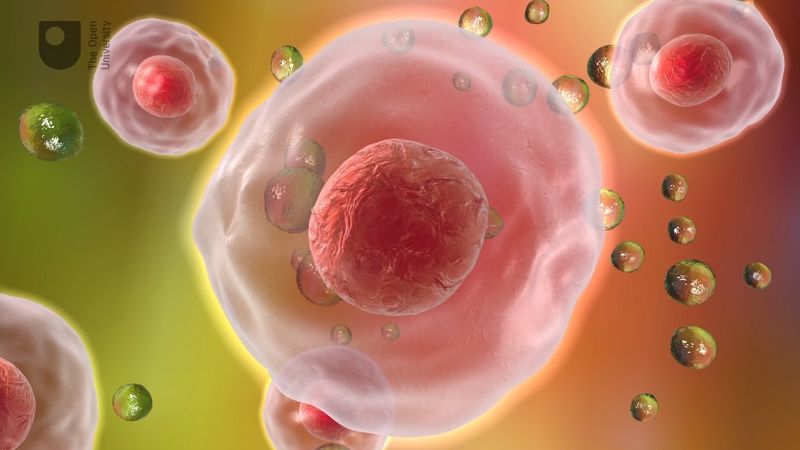
- cell
the process by which your body gets energy from food

- Metobolism
Where are Ribsomes located in the cell?
- Rough ER
- Endoplasmic Reticulum
- Nucleus
- Smooth ER
Which of the following are part of the Cell Theory?
- Cells are made primarily of water.
- All organisms are made up of one or more cells. (Missed)
- The cell is the basic unit of structure and function of living things because all life functions occur within cells. (Missed)
- All cells come from pre-existing cells. (Missed)
76. Which scientist proposed that "all plants are made of cells"?
- Louis Pasteur
- Matthias Schleiden
- Robert Hooke
- Anton van Leeuwenhoek
multicellular eukaryote that produces its own food through photosynthesis

- plant
A cell that contains a nucleus and membrane bound organelles

- Eukaryote
Which of the following statements is not part of the cell theory?
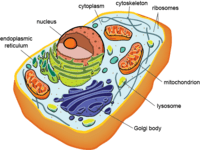
- Cells are the basic unit of structure and function in all living things.
- All cells are produced from other cells.
- Only animal cells are composed of cells.
- All living things are composed of cells.
The Cell Theory states...
- atoms create all matter
- living things evolve
- the cell is the backbone of all matter
- cells are the basic unit of structure and organization of organisms
Who first observed cells in 1665 while observing cork with a microscope he built himself?
- Mathias Schlieden
- Robert Hooke
- Antione van Leeuvenhoek
- All of the above
- None of the above
A living thing

- Organism
The regulation of internal temperature is an example of which of the functions of life?
- Homeostasis
- Metabolism
- Nutrition
- All of the above
- None of the above
97. Who proposed the idea that cells can only arise from pre-existing cells?
- Rudolf Virchow
- Louis Pasteur
- Anton van Leeuwenhoek
- Robert Hooke
A lizard basking on a rock to warm up is an example of which of the functions of life?
- Metabolism
- Response
- Homeostasis
- All of the above
- None of the above
The basic unit of structure and function in living things
- Cells
A sac inside a cell that acts as a storage area
- Vacuole
9. Which organelle is responsible for producing ATP, the cell's energy currency?
- Golgi apparatus
- Mitochondria
- Endoplasmic reticulum
- Lysosome
15. What is the name for the gel-like substance inside the cell that surrounds the organelles?
- Nucleoplasm
- Cytoplasm
- Cytosol
- Endoplasm
32. In which cellular organelle does photosynthesis take place?
- Mitochondria
- Chloroplast
- Nucleus
- Lysosome
This scientist discovered bacteria:
- Hooke
- Schwann
- Leeuwenhoek
- Virchow
Which picture does NOT belong?
- Image: https://quizizz.com/media/resource/gs/quizizz-media/quizzes/72e3ec57-f66c-470e-a10a-c92bdf436c05?w=90&h=90
- Image: https://quizizz.com/media/resource/gs/quizizz-media/quizzes/9682d2a5-afcc-4fa4-b1d9-4e37c45c8a8a?w=90&h=90
- Image: https://quizizz.com/media/resource/gs/quizizz-media/quizzes/9602d9dd-5171-4db0-bf9c-faf2d1613fcf?w=90&h=90
The combination of all cells in an organism working together determines the
- birthplace of an organism.
- the parents of an organism.
- personality of an organism.
- the shape and function of an organism.
He was a doctor. He studied human illness and looked at diseased body tissue. He observed living cells dividing into two parts. He came to the conclusion that living cells reproduced and made new living cells.

- Rudolph Virchow
What did Schwann conclude?_____ animal cells are made up of cells.
- All
Which of the following are characteristics of ALL living things?
- Growth and development
- Growth and development
- Use energy
- Reproduce
What did Leeuwenhoek do?
- Looked at cork
- Stated that animals are made of cells
- All plants are made of cells
- Used simple light microscope and saw microorganisms
Which of the following are parts of cell theory?
- Cells make up everything.
- Cells are the smallest, most basic unit of life.
- Cells come from pre-existing cells.
- All living things are made of cells.
who collaborated to form the first 2 parts of cell theory?
- Hooke & Leeuwenhoek
- Virchow & Schwann
- Schwann & Schleiden
- Schleiden & Hooke
Why are the hyphae of a fungus sometimes considered an exception to the cell theory?
- Because they contain many nuclei
- Because they have abnormal cell walls
- Because they are not photosynthetic
- All of the above
- None of the above
what is the smallest structural and functional unit of an organism?
- cell
- homeostasis
- white blood cells
- osmosis
He gave us the word "cell" for use with living things. He discovered cells looking at cork.

- Robert Hooke
An organism is...
- another word for animal
- a living thing
- anything that moves
- parts of the body
unicellular organism that lacks a nucleus

- Prokaryote
process by which organisms maintain a relatively stable internal environment

- Homeostasis
50. In which type of cell is the DNA not enclosed within a membrane-bound nucleus?
- Prokaryotic cell
- Eukaryotic cell
- Plant cell
- Animal cell
*All living things are composed of cells*Cells are the basic units of structure and function in living things*New cells are produced from existing cells
- cell theory
The prefix "Uni" means
- one
100. Which type of microscope is used to observe living cells in real-time?
- Phase-contrast microscope
- Electron microscope
- Light microscope
- Scanning tunneling microscope
What tool do you use to view the cells?
- metric ruler
- telescope
- microscope
- pipette
What did Schleiden conclude?_____ plants are made up of cells.
- All
Which type of cell contains a cell wall?
- Plant Cell
11. Which statement is part of the modern cell theory?
- All cells are prokaryotic.
- All cells come from pre-existing cells.
- Cells do not contain genetic material.
- All cells are multicellular.
Cells come only from what?
- existing cells
- nucleus
- fission
- budding
Which statement was NOT included in cell theory?
- All living things are composed of cells.
- Living cells come only from other living cells.
- Each cell contains a cell membrane, cytoplasm, nucleus, mitochondria, and endoplasmic reticulum.
- Cells are the smallest structure of living things that can perform the functions necessary for life.
98. Which part of the cell theory states that all metabolic reactions occur within cells?
- Cells are the sites of all metabolic reactions.
- Cells are the basic units of structure and function in living organisms.
- All living things are composed of cells.
- Cells can only arise from pre-existing cells.
Who was the FIRST person to see cells?
- Robert Hooke
- Anton van Leeuwenhoek
- Charles Darwin
- President Lincoln
49. Who conducted experiments that refuted the idea of spontaneous generation by showing that microorganisms only grew in broth when exposed to air?
- Anton van Leeuwenhoek
- Matthias Schleiden
- Louis Pasteur
- Robert Hooke
A venus flytrap closing its trap in response to a fly is an example of which of the functions of life?
- Response
- Metabolism
- Nutrition
- All of the above
- None of the above
96. What is the name
- Nucleoplasm
- Cytoplasm
- Cytosol
- Endoplasm
Why is bone sometimes considered an exception to the cell theory?
- Because it contains several types of stem cells which are undifferentiated
- Because it contains large amounts of nonliving extracellular material
- Because it provide structural support to other living cells
- All of the above
- None of the above
8. Which type of microscope is used to observe living cells in real-time?
- Phase-contrast microscope
- Electron microscope
- Light microscope
- Scanning tunneling microscope
plant-like protists that is mostly aquatic

- Algae
The ___ is the basic unit of sturucture and function of organisms
- atom
- cell
- matter
- all other answers are correct
what is the 2nd part of the cell theory?
- all living organisms must have cells
- all cells come from other cells
- cells are the basic unit of life
All living things share 6 common characteristics. This means that
- All living things must exhibit most of these characteristics.
- All living things exhibit at least one of these characteristics at all times.
- All living things pitch in to help each other so that no one goes without.
- All living things exhibit all 6 characteristics, or they are not considered living things.
44. Which organelle is responsible for synthesizing and packaging proteins for secretion from the cell?
- Rough endoplasmic reticulum
- Golgi apparatus
- Mitochondria
- Lysosome
42. Which scientist is known for his work on the cell theory and his advocacy for the use of microscopes in scientific research?
- Marcello Malpighi
- Anton van Leeuwenhoek
- Matthias Schleiden
- Robert Hooke
Control center of cell that contains DNA

- Nucleus
a ______ is chemical reactions inside the cell.
- metabolism
52. Who is known for his observations of plant cells and their nuclei, contributing to the understanding of cell structure?
- Anton van Leeuwenhoek
- Robert Hooke
- Robert Brown
- Louis Pasteur
21. In which type of cell would you find membrane-bound organelles such as a nucleus?
- Eukaryotic cell
- Prokaryotic cell
- Bacterial cell
- Archaeal cell
Bacteria is
- Eukaryotic
- Prokaryotic
10. Which scientist proposed that "all plants are made of cells"?
- Louis Pasteur
- Matthias Schleiden
- Robert Hooke
- Anton van Leeuwenhoek
The function of the Golgi Apparatus is to....
- Transport things in & out of the cell
- Package and export proteins
- Hold the genetic material
- Store materials needed for the cell in order to function properly
I was a zoologist. I studied animals and discovered that they all are made of cells.
- Anton Van Leewenhoek
- Rudolph Virchow
- Matthias Schlieden
- Theodor Schwann
A microscope has an ocular magnification of 10 and a high power objective magnification of 50. What is the highest total magnification of the microscope?
- 500x
- 400x
- 50x
- 40x
40. Which organelle is responsible for the synthesis of lipids and detoxification of drugs and poisons?
- Smooth endoplasmic reticulum
- Golgi apparatus
- Mitochondria
- Lysosome
In "MRS.GRENC" the 'C' stands for...
- cell
I created a more powerful microscope than Robert Hooke. I used it to study pond water and bacteria from teeth.
- Robert Hooke
- Theodor Schwann
- Anton Van Leewenhoek
- Rudolph Virchow
88. Which organelle is responsible for producing and storing cellular energy in the form of ATP?
- Golgi apparatus
- Mitochondria
- Endoplasmic reticulum
- Lysosome
Water is the only chemical found in all living cells.
- True
- False
What famous scientist did Robert Hooke “lock horns with”?
- Image: https://quizizz.com/media/resource/gs/quizizz-media/quizzes/c18af2c4-b0ca-4c9a-85c6-b20adf376af7?w=90&h=90
- Image: https://quizizz.com/media/resource/gs/quizizz-media/quizzes/d825d92b-b004-46a0-82af-332585ba3eae?w=90&h=90
- Image: https://quizizz.com/media/resource/gs/quizizz-media/quizzes/890522fb-078e-4bce-b808-4515e37fe298?w=90&h=90
- Image: https://quizizz.com/media/resource/gs/quizizz-media/quizzes/59a561c6-f590-4fc7-bda6-aeaa6051099c?w=90&h=90
19. What is the primary function of ribosomes in a cell?
- Protein synthesis
- Energy production
- Cellular respiration
- DNA replication
58. Which organelle contains enzymes that break down cellular waste and foreign substances, making it essential for cellular digestion?
- Lysosome
- Golgi apparatus
- Mitochondria
- Nucleus
Genetic Material that is passed from cell to cell
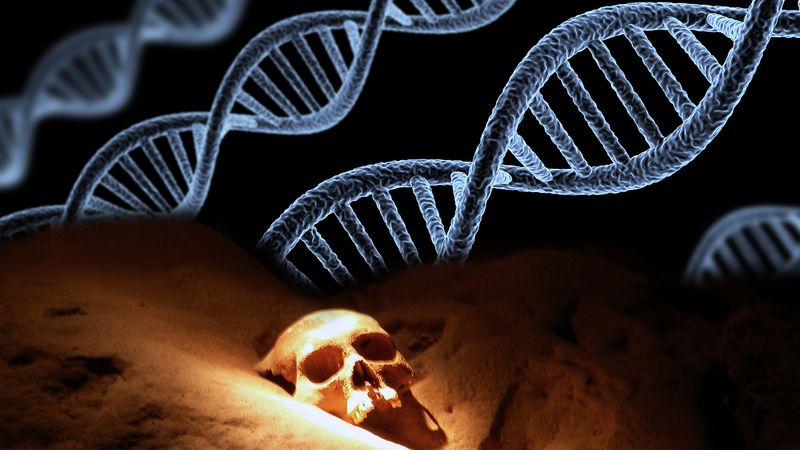
- mRNA
- RNA
- DNA
- ATP
In 1665, I created one of the first microscopes and used it to discover cells.
- Robert Hooke
- Anton Van Leewenhoek
- Rudolph Virchow
- Matthias Schlieden
63. Who proposed the idea that "all cells come from pre-existing cells" as a key principle of the cell theory?
- Anton van Leeuwenhoek
- Matthias Schleiden
- Theodor Schwann
- Rudolf Virchow
23. Who is considered the "Father of Microbiology" for his pioneering work in microbiology and the development of the microscope?
- Anton van Leeuwenhoek
- Louis Pasteur
- Matthias Schleiden
- Robert Hooke
I was a botanist. I studied plants and discovered that they all have cells.
- Theodor Schwann
- Matthias Schleiden
- Robert Hooke
- Rudolph Virchow
54. Which scientist is credited with discovering and describing the nucleus within the cell?
- Anton van Leeuwenhoek
- Matthias Schleiden
- Robert Brown
- Louis Pasteur
Why is skeletal muscle sometimes considered an exception to the cell theory?
- Because it is formed by the fusion of several cells
- Because it is formed of very large fibers
- Becuase it contains cells which each have several nuclei
- All of the above
- None of the above
A cell structure that controls which substances can enter or leave the cell.

- cell membrane
What is known as the "intracellular highway" in the cell?
- Endoplasmic Reticulum
- Golgi Apparatus
- Cell Membrane
- Nucleus
33
- Mammals
- Bacteria
- Fungi
- Protists
Which scientist was credited as being the first in observing cells?
- Hooke
- Leewenhoek
- Virchow
Which of the following would be a reasonable size for a virus?
- 100 nm
- 1 nm
- 100 pm
- All of the above
- None of the above
Which scientist contributed to the 3rd part of the cell theory
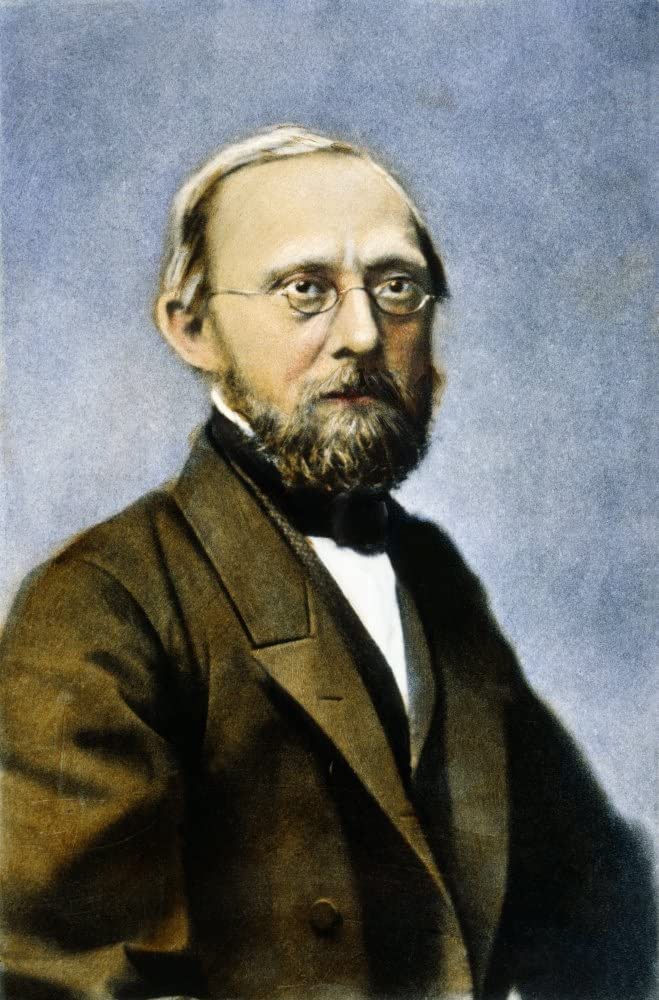
- Matthias Schleiden
- Robert Hooke
- Rudolf Virchow
- Theodor Schwann
86. Who discovered the presence of the nucleus in plant cells?
- Schwann
- Robert Brown
- Hooke
- Pasteur
Which of the following is NOT made up of cells?
- snowflake
- earthworm
- tree
- human
green organelle, in plant cells, photosynthesis, captures energy from the sun to make glucose

- chloroplast
He studied plants. He looked at lots of plants under the microscope; their leaves, flowers, roots and stems. He decided that "All plants are made of cells".

- Matthias Schleiden
Which of the following could be considered an extention or exception to the cell theory?
- Skeletal muscle cells
- Fungal hyphae
- Bone (with its extracellular material)
- All of the above
- None of the above
When we talk about an organisms ability to use energy to perform its daily functions, we are talking about the organism's
- Psyche
- Metabolism
- Ability to reproduce
- None of these
Who discovered the first compound microscope?
- Hanz and Zacharias janssen
Unicellular and Multicellular is?
- 1 cell; Multi: 2+ cells
- 2+ cells; Multi: 200 cells
- 4+ cells; Multi: 145.00 cells
- None of the above
a _______ cell provides protection against enemies.
- defense
True or False? The beginning unit is always a cell. it starts from cells to tissues to organs to organ system to organisms.
- True
- False
Which of the following would be a reasonable size for a cell?
- 100 um
- 50 um
- 10 um
- All of the above
- None of the above
Which of the following is larger than a bacterium?
- Organelle
- Virus
- Membrane
- All of the above
- None of the above
This is the most basic unit of life:
- cell
Complete the hierarchal levels of organization: _____, molecules, cells, tissue
- atom
"Control center of the cell"
- Nucleus
- Nucleolus
- Chromatin
- DNA
22. Which organelle is responsible for packaging and modifying proteins for transport within or outside the cell?
- Golgi apparatus
- Mitochondria
- Endoplasmic reticulum
- Peroxisome
2. What is the basic unit of life according to the cell theory?
- Protein
- Cell
- Molecule
- Atom
Which of the functions of life involves the reaction of organisms to environmental stimuli?
- Reproduction
- Response
- Homeostasis
- All of the above
- None of the above
Which of the following is a factor which limits cell size?
- Amount of DNA
- Surface to volume ratio
- Amount of heat generated
- All of the above
- None of the above
4. Which of the following is NOT one of the principles of the cell theory?
- All living things are composed of cells.
- Cells are the basic units of life.
- Cells can only arise from pre-existing cells.
- Cells carry out the functions of living organisms.
This is the most basic unit of life
- atom
- cell
- nucleus
- DNA
Why is it necessary to understand and to look back on the history of the development of the cell theory?
- [No Answer]
20. Which scientist is known for his work on the fermentation process, disproving the idea of spontaneous generation?
- Matthias Schleiden
- Robert Hooke
- Anton van Leeuwenhoek
- Louis Pasteur
Which of the following is larger than the average molecule?
- Virus
- Organelle
- DNA
- All of the above
- None of the above
91. Who is credited with improving and popularizing the microscope, leading to significant advancements in cell theory?
- Anton van Leeuwenhoek
- Louis Pasteur
- Matthias Schleiden
- Robert Hooke
78. Who is credited with improving and popularizing the microscope, leading to significant advancements in cell theory?
- Anton van Leeuwenhoek
- Louis Pasteur
- Matthias Schleiden
- Robert Hooke
62. What is the function of the nucleolus within the nucleus of a cell?
- Ribosome production
- DNA replication
- Lipid synthesis
- Energy production
_Select the answers that are examples of organisms
- Bacteria
- Bacteria
- Humans
- Plants
- Dogs
Improvements in the __________________________ was essential for the development of cell theory
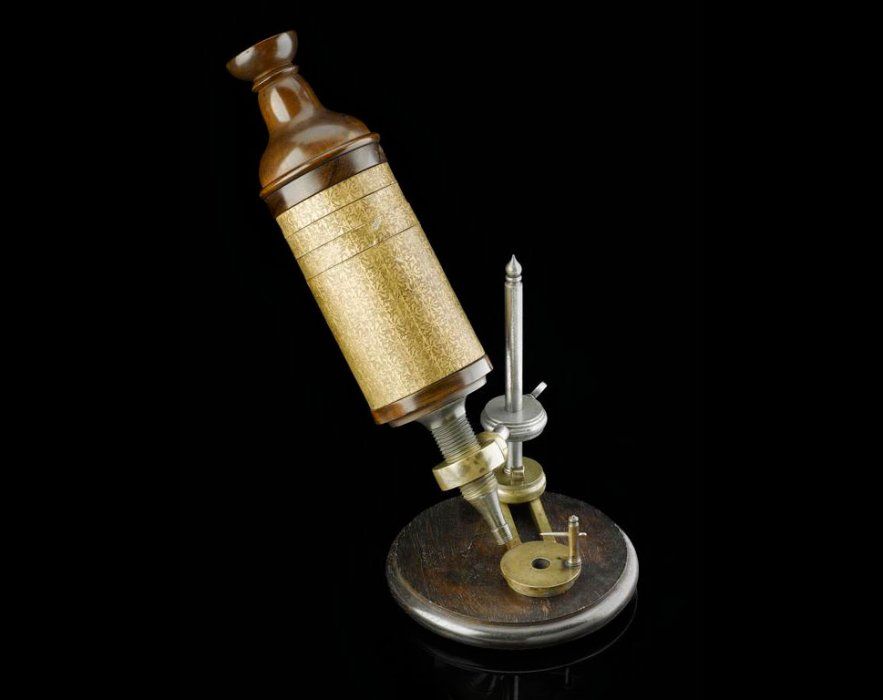
- Spectials
- Camera
- Telescope
- Microscope
True or False: ALL cells contain DNA
- True
- False
7. Who discovered the presence of the nucleus in plant cells?
- Schwann
- Robert Brown
- Hooke
- Pasteur
36. Which type of microscope uses a beam of electrons to visualize the internal structures of cells?
- Light microscope
- Phase-contrast microscope
- Electron microscope
- Scanning tunneling microscope
75. Which organelle is responsible for producing and storing cellular energy in the form of ATP?
- Golgi apparatus
- Mitochondria
- Endoplasmic reticulum
- Lysosome
57. Who is known for his work on the structure of the cell membrane and its selective permeability?
- Anton van Leeuwenhoek
- Albert Szent-Györgyi
- Matthias Schleiden
- Robert Hooke
Anton Van Leeuwenhoek was the first to see bacteria and protist in a drop of pond water which hecalled?
- animalcules
Bacteria is classified as a what?
- Prokaryote
- Eukaryote
True or False:Robert Hooke invented the FIRST microscope.
- true
- false
12. Who is credited with improving and popularizing the microscope, leading to significant advancements in cell theory?
- Anton van Leeuwenhoek
- Louis Pasteur
- Matthias Schleiden
- Robert Hooke
TRUE OR FALSE: Living things and non-living things are both made of cells?
- True
- False
Which of the functions of life involves maintaining a constant internal environment?
- Metabolism
- Response
- Nutrition
- All of the above
- None of the above
16. Who proposed the idea that cells can only arise from pre-existing cells?
- Rudolf Virchow
- Louis Pasteur
- Anton van Leeuwenhoek
- Robert Hooke
Where did Rudolf Virchow say cells came from?
- Previous Cells
- Free-Cell Formation
83. What is the name for the gel-like substance inside the cell that surrounds the organelles?
- Nucleoplasm
- Cytoplasm
- Cytosol
- Endoplasm
Which function of life iincludes all of the chemical reactions that occur within an organism?
- Homeostasis
- Metabolism
- Nutrition
- All of the above
- None of the above
68. Which organelle is responsible for producing ATP, the cell's energy currency?
- Mitochondria
- Golgi apparatus
- Endoplasmic reticulum
- Lysosome
85. Which part of the cell theory states that all metabolic reactions occur within cells?
- Cells are the sites of all metabolic reactions.
- Cells are the basic units of structure and function in living organisms.
- All living things are composed of cells.
- Cells can only arise from pre-existing cells.
The first part of the cell theory states "What happens in cell theory, stay in Cell Theory"
- True
- False
- Sometimes True
- Sometimes False
What magnification are the 3 objective lens?
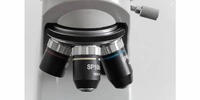
- 4 40 10
who discovered plant cells? what year?
- Robert Hooke1839
- Anton van Leeuweenhoek1665
- Theodor Schwann1855
- Matthias Schleiden1838
what is the 1st part of the cell theory?
- all cells come from other cells
- all living organisms must have cells
- cells are the basic unit of life
There are three tenets of the Cell Theory. Which of the following is NOT a tenet?
- Cells are the basic structure and function of life.
- All living things are made of one or more cells.
- The cell is the basic unit of matter.
- All cells come from preexisting cells.
Consisting of many cells

- Multicellular
34. Who proposed the idea that "all animals are made of cells"?
- Anton van Leeuwenhoek
- Robert Hooke
- Theodor Schwann
- Louis Pasteur
who discovered animal cells? what year?
- Robert Hooke1665
- Anton van Leeuwenhoek1670
- Theodor Schwann1839
- Matthias Schleiden1838
single-celled or simple multicellular eukaryotic organisms that generally do not fit in any other kingdom

- Protists
Cells that are only made of ___ cell are called unicellular.
- one
What do we mean by "cellular organization"?
- The Cell Theory organizes how we think about living things.
- Cells are the basic building blocks of all living things because all living things are composed of cells.
- There is a hierarchy in the importance of cells in a living thing.
- All of these
Tiny structures inside the cell that carry out specific functions.
- Cell Wall
- Atoms
- Cells
- Organelles
First scientist to see cells under a microscope and call them cells

- Matthias Schleiden
- Robert Hooke
- Theodor Schwann
- Rudolf Virchow
What is the most important chemical for life?
- Water
- Carbon dioxide
- Sodium chloride
- Helium
He refuted spontaneous generation.
- Lazzaro Spallanzani
The third statement of The Cell Theory. This is based on Rudolf Virchow's observation of living cells reproducing.

- Cells only come from living cells.
Cell theory is one of the foundation of
- biology
About when did the discovery/development of microscopes begin?
- 1600s
What are the tiny boxes Robert Hooke saw in this drawing?

- Cells
Which of the following is NOT one of the basic points of Cell Theory?
- All living things are made of cells.
- The cell is the smallest living thing that can perform all the functions of life.
- Cells are too small to see without a microscope.
- All cells must come from pre-existing cells.
What is one way that bacteria differ from plants, animals, and most fungi?
- Bacteria are unicellular organisms.
- Bacteria need to be kept in cold environments.
- Bacteria need other organisms in order to survive.
- Bacteria are able to divide their cells in order to survive.
Rocks are not living because
- they never move
- they aren't needed for humans
- they are not made of cells
- they don't break down
What is the function of Ribosomes?
- Produce ATP
- Protein Synthesis
- Carries genetic material
- Protects the cell from harmful substances
77. Which statement is part of the modern cell theory?
- All cells are prokaryotic.
- All cells come from pre-existing cells.
- Cells do not contain genetic material.
- All cells are multicellular.
prokaryotic cells...
- have a nucleus
- don´t have a nucleus
Robert Hooke was...?
- The 1st to see a cell, and named it a cell(a room); looked at cork; saw a line of cells that reminded him of rooms.
- Said that al plants are multicellular
- Said that the begining unit is always a cell
- Was the 2nd person to see a man on earth
What did Theodore Schwann observe?
- Plant Cells
- Animal Cells
- Bacteria
The smallest unit inside all living things.
- Atoms
- Organs
- Cell
- Tissues
device that produces magnified images of structures that are too small to see with the unaided eye

- microscope
35. Which organelle is responsible for maintaining cell turgidity and storing water in plant cells?
- Golgi apparatus
- Mitochondria
- Endoplasmic reticulum
- Vacuole
Eukaryotes DO HAVE
- a membrane bound nucleus
- a virus
- pili
- antibacterial protection
Cell organelle that stores materials such as water, salts, proteins, and carbohydrates

- Vacuole
An embryo developing fingers from flippers is an example of which of the functions of life?
- Response
- Homeostasis
- Metabolism
- All of the above
- None of the above
This term means life comes from non-life
- Abiotic
- Spontaneous Generation
- Abiogenesis
Which of the following is NOT made of cells?
- a rock
- an ant
- you and me
- a tree
All organisms have cells
- True
- False
51. What is the function of the cilia and flagella in a cell?
- Facilitate cell movement and the movement of substances around the cell surface.
- Synthesize proteins.
- Store genetic information.
- Produce ATP.
True or False? All cells don't come from pre-existing cells.
- True
- False
Which of the following is larger than tRNA?
- Codon
- Nucleotide
- Virus
- All of the above
- None of the above
Where did Schleiden think cells came from?
- Previous Cells
- Free-Cell Formation
59. What is the function of the peroxisome in a cell?
- Synthesize proteins
- Detoxify harmful substances and break down fatty acids.
- Store genetic information
- Produce ATP
Controls what enters and leaves the cell.
- Cell Membrane
- Nucleus
- Vacuole
- Cell
The control center of the cell.
- Vacuole
- Mitochondria
- Cell Wall
- Nucleus
43. In which part of the cell does DNA replication occur?
- Nucleus
- Mitochondria
- Cytosol
Which technology was essential for the development of the cell theory?
- Telescope
- Antiseptics
- Microwaves
- Microscopes
T.Schwann did which of the following?
- He said that plants are not made of cells
- Said that animals aren't made of cells
- Stated that all plants have cell
- Stated that all animals have cells
65. Which organelle is responsible for packaging and modifying proteins for transport within or outside the cell?
- Golgi apparatus
- Mitochondria
- Endoplasmic reticulum
- Peroxisome
Which of the following is larger than a membrane (in diameter)?
- Virus
- Lysosome
- Vacuole
- All of the above
- None of the above
An increase in the apparent size of an object

- Magnification
Cells...
- are fundamental units of life
- are fundamental units of life
- are in all living things
- make up tissue
What did Matthias Schleiden observe?
- Plant Cells
- Animal Cells
- Bacteria
39. Who coined the term "protoplasm" to describe the substance of living cells?
- Anton van Leeuwenhoek
- Johann D. E. Schleiden
- Robert Hooke
- Louis Pasteur
The__________ sharpens the image under high magnification.
- the diaphragm
- fine adjustment knob
- coarse adjustment knob
- the ocular
What piece holds the microscope slide in place ?
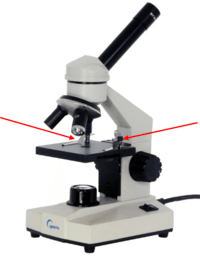
- Base
- Diaphragm
- Stage Clips
- Stage
TRUE OR FALSE: Viruses are made of cells.
- True
- False
Differentiation is an example of which of the functions of life?
- Growth
- Homeostasis
- Response
- All of the above
- None of the above
The thin flexible barrier that surrounds a cell
- cell membrane
The arrangement of parts in an organism
- structure
Which of the functions of life involves hereditary molecules that can be passed to offspring?
- Reproduction
- Response
- Growth
- All of the above
- None of the above
Why are microscopes important when studying most cells?
- Most cells are very large.
- Most cells are very small.
- Most cells move very quickly.
- Most cells are dead.
who named a ¨cell¨?
- Robert Hooke
- Anton Van Leeuwenhoek
- Theodor Schwann
- Matthias Schleiden
Which of the following is a reason that biologists study unicellular organisms?
- They are small and easily grown in the laboratory
- They are the simplest organism which carries on all of the functions of life
- They reproduce quickly
- All of the above
- None of the above
The invention of the microscope made it possible for people to discover and learn about
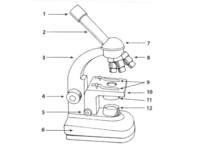
- Plants
- Skin
- Animals
- Cells
Which of the following is maintained through homeostasis?
- Reproduction
- Growth
- Temperature
- All of the above
- None of the above
87. Which type of microscope is used to observe living cells in real-time?
- Phase-contrast microscope
- Electron microscope
- Light microscope
- Scanning tunneling microscope
strong, supporting layer around the cell membrane in some cells

- cell wall
46. Who proposed that "all living things are made up of one or more cells" as a key principle of the cell theory?
- Anton van Leeuwenhoek
- Theodor Schwann
- Matthias Schleiden
- Louis Pasteur
The regulation of salt and water levels within an organism is an example of which of the functions of life?
- Growth
- Nutrition
- Metabolism
- All of the above
- None of the above
61. Which type of microscope uses a laser beam to visualize and manipulate individual molecules and cells?
- Scanning tunneling microscope
- Light microscope
- Phase-contrast microscope
- Transmission electron microscope
Cells that enclose their DNA in nuclei; animal and plant cells
- eukaryotes
Lastly cell theory states....
- cells don't do much
- cells are microscopic
- all living things are made up of cells (either unicellular or multicellular)
- bacteria aren't cells
This type of cell does contain a nucleus.
- Prokaryotic
- Eukaryotic
- Bacteria Cells
- Archaebacteria
There are three parts to the cell theory. Which is NOT one of those parts?
- All organisms are composed of one or more cells.
- The cell is the basic unit of structure and organization in organisms.
- Cells spontaneously arise from carbon and nutrients carried in the bloodstream.
- All cells come from pre-existing cells.
What is evidence?
- data that supports the book
- data that supports the claim
- data that is cool
- data that is wrong
All existing cells are produced by other
- living cells
- dead cells
- atom cells
- animal cells
How many statement are there in a cell theory?
- 3
A tool used by biologists to study microscopic (TINY) details of living things.

- Microscope
64. In which type of cell would you find membrane-bound organelles such as a nucleus?
- Eukaryotic cell
- Prokaryotic cell
- Bacterial cell
- Archaeal cell
This type of cell doesn't contain a nucleus.
- Prokaryotic
- Eukaryotic
- Fungi
- Bacteria
- Body Cells
The 3 scientists most responsible for the development of Cell Theory are:
- Robert Hook, Albert Einstein, Carolus Linnaeus
- Theodor Schwann, Matthias Schleiden, and Rudolf Virchow
- Robert Hooke, Rudolf Virchow, Teresa Engebretsen
- Theodor Schwann, Rudolf Virchow and Robert Hooke
TRUE OR FALSE: All the following things are non-living: A treeA bookA water bottle
- True
- False
Which of the following is larger than a nucleotide?
- Ribosome
- Virus
- Membrane
- All of the above
- None of the above
Cells are often called "the ____ of life."

- bread
- road map
- building blocks
- meaning
Organisms made of only one type of cell are called ____________ organisms
- Unicellular
The prefix "Multi" means
- many
in the year ____ Anton van Leeuwenhoek improved the microscope.
- 1670
93. Which type of microscope is used to observe living cells in real-time?
- Phase-contrast microscope
- Light microscope
- Electron microscope
- Scanning tunneling microscope
This photo shows...
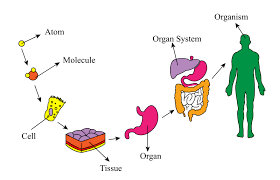
- how humans are born
- the levels of hierarchal organization
- the nervous system
- a living thing
Rudolf Virchow's observations helped to disprove was commonly held belief of the time?
- evolution
- the existence of molecules
- sponataneous generation
- atomic models
26. Which organelle is responsible for breaking down cellular waste and recycling cellular components?
- Mitochondria
- Golgi apparatus
- Endoplasmic reticulum
- Lysosome
84. Who proposed the idea that cells can only arise from pre-existing cells?
- Rudolf Virchow
- Louis Pasteur
- Anton van Leeuwenhoek
- Robert Hooke
What is wrong this how the student is carrying the microscope in the image?
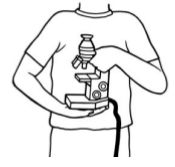
- They are using two hands.
- They are carrying it close to their body.
- The plug is not wrapped around the base.
- They are walking.
Father and Son team invented the 1st compound microscope
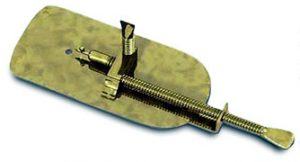
- Robert and John Hooke
- Hans and Zacharias Janssen
- Mattias and Jacob Schleiden
- Rudolf and Hans Virchow
48. Which statement is true about eukaryotic cells?
- They have a true nucleus enclosed within a membrane.
- They lack membrane-bound organelles.
- They are typically smaller than prokaryotic cells.
- They lack genetic material.
_Select the levels ofhierarchical organization that organs are made of
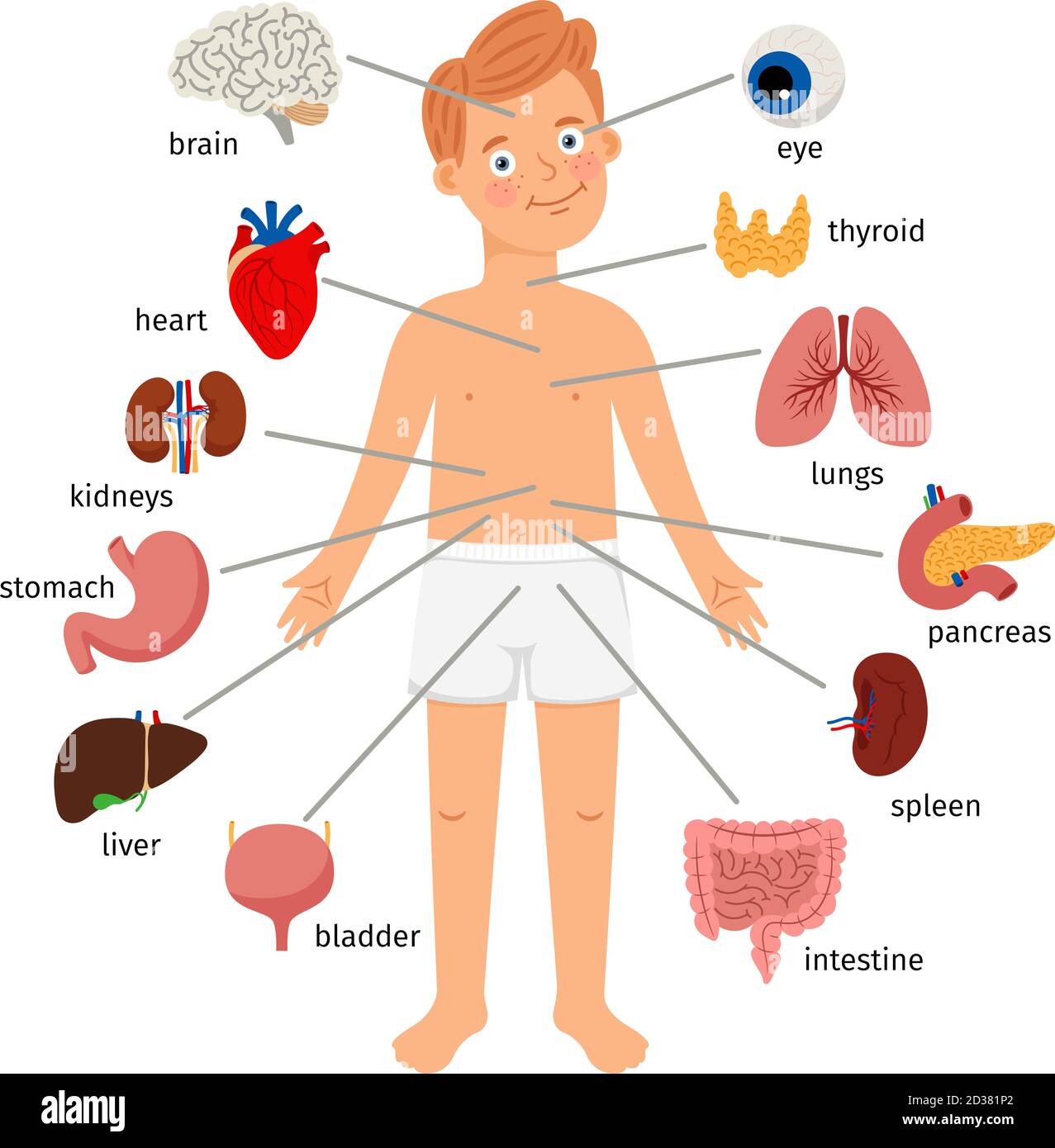
- Cells, organs, tissue
- Organ system, tissue, atoms
- Molecules, cells, tissues
- Atoms, molecules, organ system
Which of the following is larger than an organelle?
- Membrane
- Virus
- Bacterium
- All of the above
- None of the above
True or False: Bacteria cells have a nucleus
- True
- False
73. Who discovered the presence of the nucleus in plant cells?
- Schwann
- Robert Brown
- Hooke
- Pasteur
Which type of protist uses a pseudopod to move?
- Amoeba
- Euglena
- Paramecium
Why was the term “cell” used in reference to the chambers he observed in the cork? They looked like __________.
- the rooms monks slept in in their monasteries.
- office cubicals.
- high school lockers.
- cemetery plots.
He saw the first living microorganisms.

- Anton von Leeuwenhoek
24. Which type of cell lacks a defined nucleus and membrane-bound organelles?
- Animal cell
- Prokaryotic cell
- Plant cell
- Fungal cell
71. What is the correct sequence of the development of the cell theory by scientists?
- Hooke, Schleiden, Schwann
- Schleiden, Schwann, Virchow
- Leeuwenhoek, Mendel, Hooke
- Pasteur, Virchow, Leeuwenhoek
What piece is the platform that supports the microscope slide?
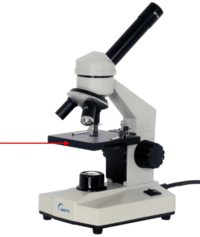
- Base
- Diaphragm
- Stage Clips
- Stage
79. What is the primary function of the cell membrane?
- Regulate the passage of substances in and out of the cell.
- Store genetic information.
- Produce ATP.
- Synthesize proteins.
What is the approximate thickness (diameter) of DNA?
- 2 um
- 2 nm
- 2 pm
- All of the above
- None of the above
who created the 3rd part of the cell theory?
- Rudolph Virchow
- Robert Hooke
- Theodor Schwann
- Matthias Schleiden
Who stated that cell comes from pre-existing cell?
- Matthias Schleiden
- Theodor Schwann
- Rudolf Virchow
- John Needham
95. Which scientist first observed and described animalcules (microorganisms) using microscopes?
- Robert Brown
- Anton van Leeuwenhoek
- Matthias Schleiden
- Louis Pasteur
Which is not true of the cell theory?
- All living organisms are composed of cells.
- All cells have a nucleus, which acts like a brain of the cell.
- All cells come from preexisting cells.
A plant and an animal are both living things. According to the Cell Theory, what can you conclude about these two very different organisms?
- Plants have cells but animals do not.
- They are both made of one or more cells.
- They both come from the same kind of cell.
- They both come from a non-living organism.
What is the basic structural and functional unit of all living things?
- atom
- cell
- bacteria
- animalcules
80. Which type of microscope is used to observe living cells in real-time?
- Phase-contrast microscope
- Light microscope
- Electron microscope
- Scanning tunneling microscope
Where does Cellular Respiration take place within the cell?
- Nucleus
- Ribsomes
- Mitochondria
- Endoplasmic Reticulum
The regulation of pH levels in an organism is an example of which of the functions of life?
- Metabolism
- Response
- Growth
- All of the above
- None of the above
Which cell organelle is called as the power house of the cell?
- Ribosomes
- Mitochondria
- Lysosomes
- Endoplasmic Reticulation
single-celled organisms that lack a nucleus; prokaryotes

- Bacteria
To keep up this site, we need your assistance. A little gift will help us alot.
Donate- The more you give the more you receive.
Related SubjectAdipose Tissue
Biochemistry
Unified Functional Testing
Living in the Information Technology Era
Business Research
Healthcare Studies
Tadpoles: From Water to Land
Physical Science
Life Science
Microbiology and Parasitology
Inorganic and Organic Chemistry
Environmental Science
Earth Science
Chemistry for Engineers
Anatomy and Physiology
Mike Brown: Basketball Coaching
The Importance of STEM Education
Programming vs Coding
The Freedom Factory: Innovation
Boeing: A Century of Aerospace Excellence
Web Application Development
Psychology
Family Child Care
System Analysis Design and Development
Training and Development
Special Topics in Human Resource Management
Science Technology and Society
Mobile Application Design and Development
Introduction to Multimedia
Computer Programming
Software Engineering 2
Bacteria
Gender and Society
Show All Subject
Affiliate Links
Shopee Cashback Voucher
Temu $0 Shipping Fee
Amazon 75% Off Discounts















